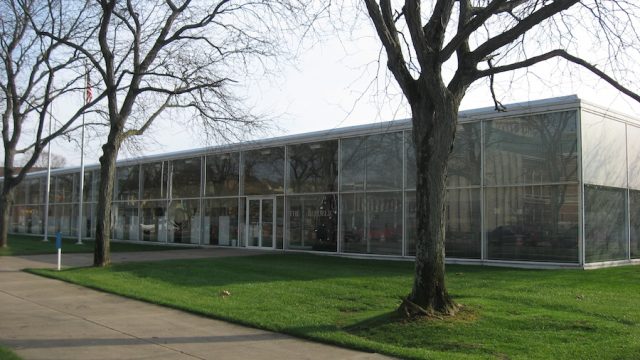Article
Church Planting and Funding Facilities
As people steward financially into your church, they will expect that the money is handled well.

Today’s economy requires churches to have specific funds set aside for ministry and facilities. For a church plant, the start-up phase requires support from outside groups and it requires the planter to be a good steward of the limited funds available. From the beginning of your church plant, I encourage planters and their leaders to set aside funds for future facilities.
Part of being a good steward requires discipline in how we use ministry funds to accomplish the work of the church. As guests and members tithe and engage in ministry, they trust that the leadership of the church will use that money in the best way to further the kingdom. A healthy budget at the start, written down, will guide you and serve you well as you grow.
Church planters often ask, “How much money should we be saving?” This question has generally come after we have discussed setting up a building fund. The answer to the question is not a set answer for every church. Each group is different and every budget is unique. My response for most churches is “Save every dollar you can”. You can’t be wrong to start by saving 10% and setting it aside as savings. Later on, it may not be a building fund; it may be a rainy day fund.
If you are saving money specifically for a building fund, I encourage the church to set a consistent amount aside each month to show discipline in setting aside funds. This will help when a lender sees that a church has consistently paid a lease or a mortgage plus put away a consistent amount for the future. Moving into a lease space may require significant funds to renovate a space and if you are preparing to purchase then you will need to have 20 – 30% in cash to get a loan.
Categorize your Spending
In any discussion of saving cash, it is wise to make sure you understand your spending allocation. Let’s categorize your spending into three buckets: Staffing, Facilities and Programming. Having a plan, on paper from the start will help you set aside funds as you grow.
• Staffing – This is generally 50% of a church budget. Early on in a plant you may intentionally keep this cost low by being vocational and having volunteers as opposed to paid staff. If you can keep staffing low, then you can better invest in the ministry programs and the location you secure.
• Facilities – A healthy target is 25% of your budget. Many people will use a number closer to 33%, but that will tend to put more pressure on your budget. Again, if you can reduce the staffing expense, then you may be able to allocate a little more for your facilities.
• Programming – These are the ministries that you offer. For example, community events and curriculum will cost money. This may also include supporting other ministries or church plants that are important to your church.
Looking at the three buckets above, it is important to point out that you can surpass the suggested percentage in one bucket and make the other two work, but if you go too high in two buckets then the remaining bucket will suffer. The following example is a real story.
XYZ Church had been open for 5+ years. During that time they were able to use a great location for $1,500 per month. Early on I met with this church and explained that the market area was expensive and recommended they save cash for a future lease or a building purchase. The pastor explained that their mindset was “every dollar in, every dollar out”.
I encouraged him to increase his facilities expense by paying the church building fund a consistent amount every month over and above the $1,500 they spent for their Sunday rent. Fast forward 4 years and the perfect building, a building this church prayed for became available. The owner was willing to offer Seller Finance. However, the Seller reviewed the church finances like a banker would. In the end the Seller could not reconcile the church’s financial position and would not finance the deal.
This church had a strong income of well over $500,000 per year. Their facilities bucket was less than 3.5% of the budget and everything else went to staffing and ministries. The end result was that the church did not have the ability to qualify for a loan. Had this church set aside the extra $10,000+ per month that a healthy church would have, they would have saved $480,000+ over 4 years. With that money in the bank the church would not have missed this opportunity.
A Building Fund
The funds that you set aside are often considered to be a “building fund”. It is critical that your church leadership understands that not only do you need to have cash set aside for capital improvements or a purchase, but the church must also have cash set aside for at least 6 months of reserves for the ministry to run. Most lenders will require a church to have a reserve fund that will sustain a church during a downturn in the economy.
Many church plants and young churches are spending every dollar on ministry and are stretching to make ends meet. As these churches grow, many seek to add staff to handle the growth. There is great wisdom in keeping expenses low and setting aside money as early as you can to prepare to house the new growth.
This discussion can be a daunting one for many churches. I encourage every church I work with to get a clear understanding of their financial picture. If you need an advisor to meet with you and help you get a financial plan together, contact me and I will assist you in getting to the right person for your ministry. It may be a CPA in your church or a CPA that serves churches every day.
Either way, it is critical to your ministry that the finances are in order and that the ministry plan has a corresponding financial plan to meet the needs of the ministry. As a Pastor, there is a great responsibility to guard the gifts given by the people and to best use what is brought to the storehouse to the Glory of God and to accomplish the mission that we have been given. Seek wisdom and counsel so that each and every financial decision is missionally directed and ministry driven.



